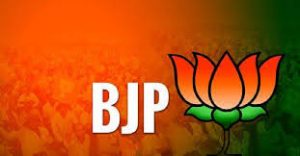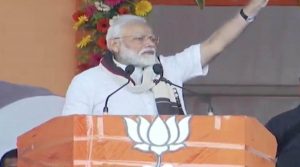 By Nageshwar Patnaik in Bhubaneswar, June 3, 2024: As the country waits with bated breath for the results of the just concluded Lok Sabha elections, the Exit Poll Predictions 2024 predominately hints at status quo in the country’s governance. With a resounding victory for the ruling Bharatiya Janata Party (BJP), Narendra Modi appears all set to be the second prime minister to retain power for a third term. Besides, the saffron party is predicted to spread its wings to the southern and eastern states as well, winning a couple of seats even in states where it was so far almost non-existent.
By Nageshwar Patnaik in Bhubaneswar, June 3, 2024: As the country waits with bated breath for the results of the just concluded Lok Sabha elections, the Exit Poll Predictions 2024 predominately hints at status quo in the country’s governance. With a resounding victory for the ruling Bharatiya Janata Party (BJP), Narendra Modi appears all set to be the second prime minister to retain power for a third term. Besides, the saffron party is predicted to spread its wings to the southern and eastern states as well, winning a couple of seats even in states where it was so far almost non-existent.
The Modi government had set a target of 400 Lok Sabha – “Abki Baar, Charsau Paar” (This time, we will cross the tally of 400). However, the National Democratic Alliance (NDA) is likely to fall short of about 20-30 seats. In 2019, the BJP had won 303 seats on its own, while its NDA partners had added another 50 to the tally. Some predict losses for BJP in the Hindi heartland due to a lower turnout percentage. Interestingly, a lower turnout has no impact on the final results. In 2014, Delhi’s voting percentage was 70% while five years later the voting percentage fell sharply to 60% but the result was the same. Both the times, BJP swept all seven seats in the national capital.
Some analysts suggested that the BJP could lose this election citing the example of 2004, when Atal Bihari Vajpayee, a public favourite, lost the mandate. Interestingly, nearly all exit polls had failed to gauge the public mood back then. In the 1999 general elections, the BJP won 182 seats with a 24% vote share, while the Congress won 114 with 28% votes. Though the gap between the vote shares of the two was just 4 percentage points (pp), the BJP still managed to form a government with the support of NDA allies.
The BJP’s average lead on the seats it won was around 65,000 in terms of votes and 9 pp in terms of vote share. A victory margin of 10 pp is usually considered a close contest as a swing of only 5 pp is enough to reverse the mandate. The BJP victory in 1999 was thus not huge, which is partly why it lost to the Congress in the next general election.
 In 2004 Lok Sabha polls, the BJP won 138 seats down by 44 seats with a 22% vote share, while the Congress won 145 with a 27% vote share. The Congress formed a government with its United Progressive Alliance (UPA) allies, and the BJP was handed a shock defeat despite its ‘India Shining’ campaign.
In 2004 Lok Sabha polls, the BJP won 138 seats down by 44 seats with a 22% vote share, while the Congress won 145 with a 27% vote share. The Congress formed a government with its United Progressive Alliance (UPA) allies, and the BJP was handed a shock defeat despite its ‘India Shining’ campaign.
In 2019, the BJP’s average winning margin for its victory seats was around 2.32 lakh votes and 20 pp in terms of vote share. A victory margin of 20 pp is considered a one-sided contest as a swing of more than 10 pp is needed to tilt the contest. It is well-nigh impossible for opposition to reverse such a huge margin in 2024 polls.
In the 2019 Lok Sabha elections, one out of every three voters (32%) who voted for the BJP would not have done so if Modi were not the prime ministerial face of the party, according to the Centre for the Study of Developing Societies’ (CSDS) National Election Study (NES). The NDA received 27.5 crore votes in 2019, a lead of 11 crore over the UPA’s 16.5 crore votes. The MOTN survey in August 2023 showed that the share of voters who supported the BJP primarily because of Modi has increased from 32% to 44%.
The question is whether the image appeal of Modi to the voters across India is rising or dwindling. The Modi Brand, it seems, is still going strong. Opposition parties were hoping that this election will see his popularity fading away and Tuesday verdict will make thing crystal clear. The whole nation has observed that the entire election has been carried on Modi’s shoulders. It is needless to say that he continues to attract the huge gamut of women and youth voter base.
Modi has been speaking the language of 21st century ‘Young India’. With an unmatched youth population in the country, more than two-third Indians being between the age group of 15 and 59, there is a huge “demographic dividend” which only Modi could reap because his story of ‘rebooting India’ is a powerful one. Incidentally, his appeal has now gone to newer geographies where so far BJP had never opened its account and where it is expected that Modi charisma will work and they will clock a few seats.
 He also continues to portray his image of being a determined and honest karyakarta (worker) of the party. With his charismatic personality and influential public speaking he has managed to woo the masses like never before. Modi weaves a powerful narrative which keeps the country first and individual interests later. He also carefully nurtured the increasing sense of a Hindu religious-political identity in the last ten years. The consecration of the Shri Ram Mandir in January this year was a watershed moment which seems to have garnered a huge support in favour of Modi. He also has succeeded to woo Dalits which had never supported the BJP.
He also continues to portray his image of being a determined and honest karyakarta (worker) of the party. With his charismatic personality and influential public speaking he has managed to woo the masses like never before. Modi weaves a powerful narrative which keeps the country first and individual interests later. He also carefully nurtured the increasing sense of a Hindu religious-political identity in the last ten years. The consecration of the Shri Ram Mandir in January this year was a watershed moment which seems to have garnered a huge support in favour of Modi. He also has succeeded to woo Dalits which had never supported the BJP.
The classic example is that at the end of the campaigning, Modi sat in meditation at the memorial of one of the most revered Indian saints of all times, Swami Vivekanand, reinforcing an inclusive Hindu identity. Modi swayed the average Hindu like never before. Brand Modi seems to be still shining. His charismatic personality is all set to pave the way for the BJP to carve out a niche by trouncing the opposition for third tenure in a row.



Leave a Reply
Be the First to Comment!